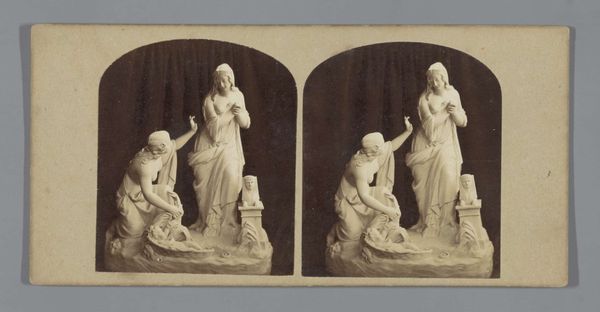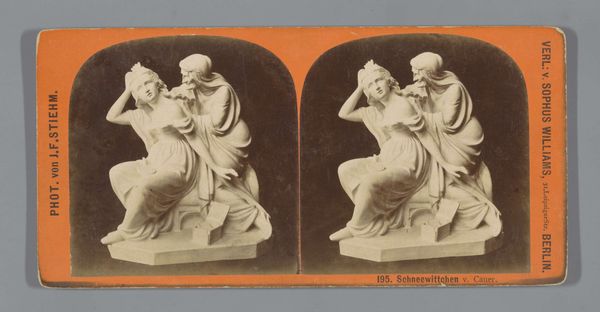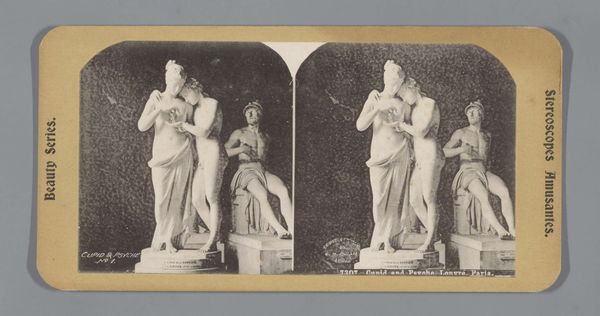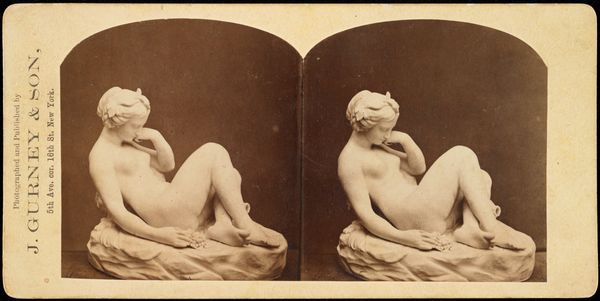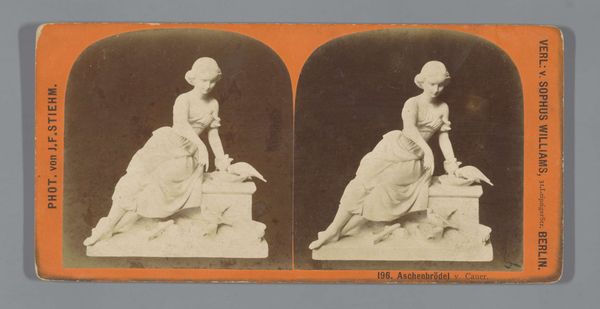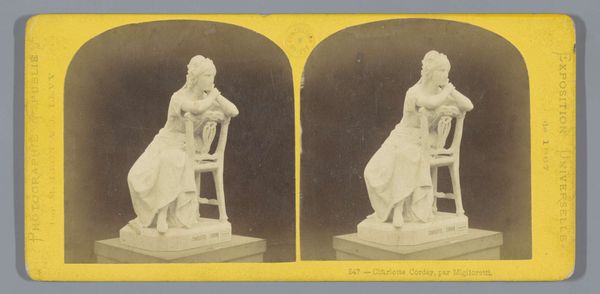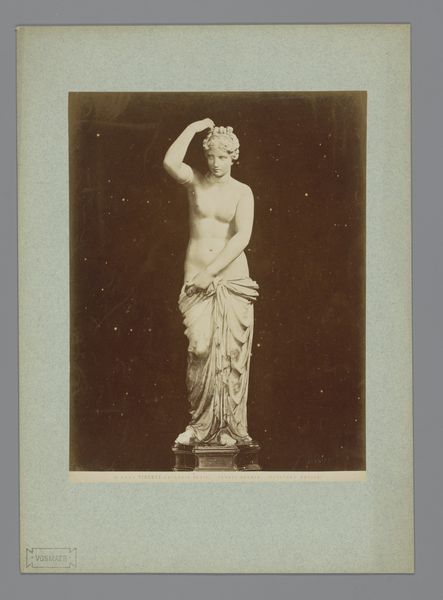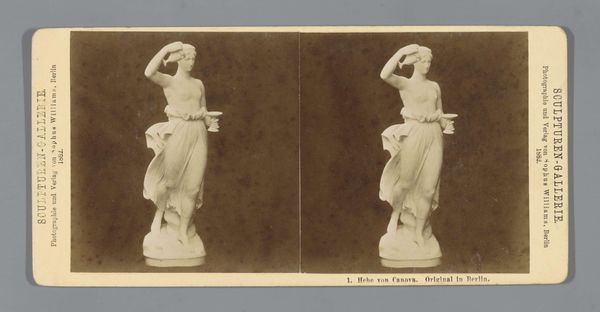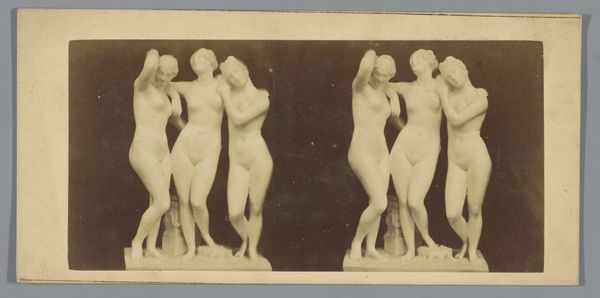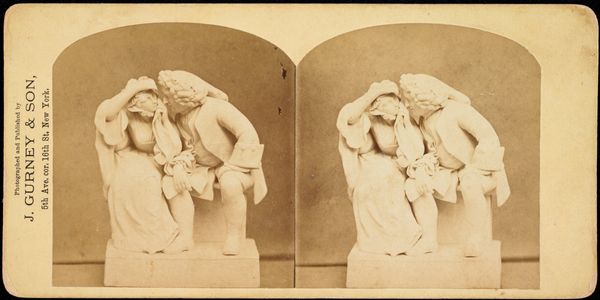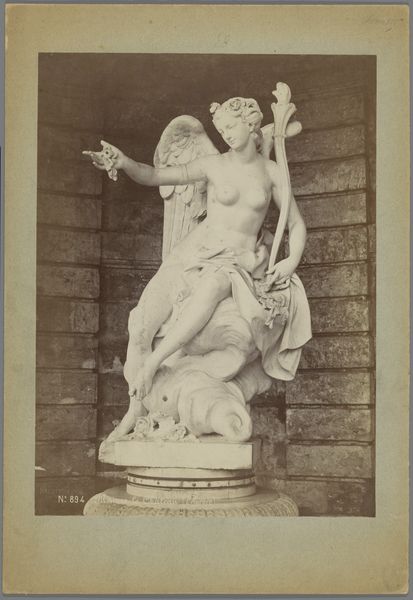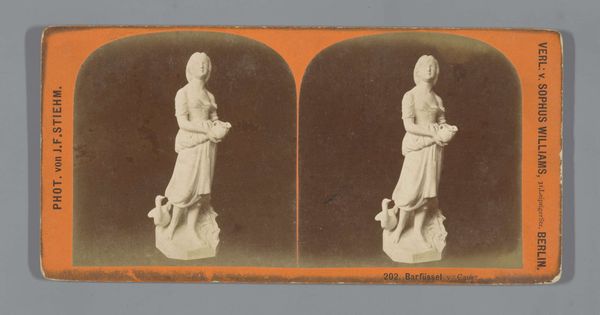
photography, sculpture
#
portrait
#
greek-and-roman-art
#
classical-realism
#
photography
#
sculpture
#
nude
Dimensions: height 84 mm, width 175 mm
Copyright: Rijks Museum: Open Domain
Editor: This photograph captures a sculpture titled "Sculptuur van de Griekse dichteres Sappho," dating from around 1855 to 1880. The material appears to be marble. There’s a stillness and almost melancholy feel to the piece, but I'm curious about its creation and context. What stands out to you when you examine it? Curator: I’m drawn to the image's layered mediation. Here we see photography, itself a material process of light and chemicals, documenting sculpture, a laborious carving process. It also signifies the reproduction of artwork for wider consumption beyond the elite. Who was commissioning these photographs and why? Was this an affordable way for a middle-class audience to enjoy Neoclassical artwork? Editor: That's a great point! It shifts my perspective. I hadn't thought about the photograph as a commodity in itself, making art accessible but also altering its meaning. Were these photos aiming for "artistic" status themselves? Curator: Precisely! Consider the dark backdrop and theatrical lighting; clearly, a lot of thought went into the image's production values. So it raises some fundamental questions. Is photography a craft, or can it be art? Where does the "art" reside – in the original sculpture or in its photographic reproduction and distribution? What happens when you have this layering of materiality and reproductive technologies? Editor: So much to consider! The act of making and distributing informs the reading of the image and object shown. It reframes my initial emotional reaction by forcing me to consider material factors. Curator: Exactly. By analyzing its materials and the context surrounding its creation, circulation and audience, we’ve revealed far more complexity than simply taking it at face value. Hopefully, this conversation has equipped you with new ways of viewing artworks and thinking about accessibility.
Comments
No comments
Be the first to comment and join the conversation on the ultimate creative platform.
